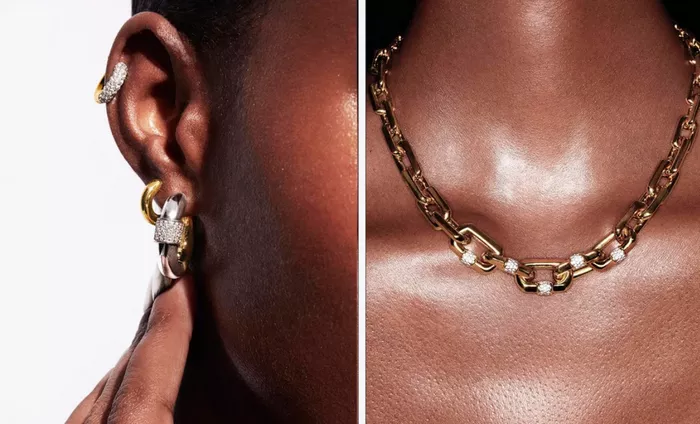In the realm of jewelry, the chain is not merely a functional component but a crucial aesthetic and structural element. Whether you’re considering a necklace for everyday wear or a special occasion piece, the strength and durability of the chain are paramount. With a myriad of styles available, each boasting unique characteristics, selecting the strongest style of chain requires careful consideration of several factors. From material composition to design intricacies, understanding these elements will empower you to make an informed decision that ensures both longevity and style.
Understanding Chain Strength: Key Factors
Material Composition: The strength of a chain begins with the materials used in its construction. Common materials include:
Sterling Silver: Known for its elegance, sterling silver chains are relatively strong but can be prone to tarnishing without proper care.
Gold: Both yellow and white gold chains are popular choices for their beauty and durability. Gold chains are measured in karats, with 18K and 14K being common options offering a balance of strength and purity.
Platinum: Highly durable and resistant to tarnishing, platinum chains are among the strongest options available, albeit at a higher price point.
Stainless Steel: Increasingly popular due to its affordability and robustness, stainless steel chains are resistant to corrosion and suitable for everyday wear.
Titanium: Exceptionally strong yet lightweight, titanium chains are hypoallergenic and resistant to tarnishing, making them ideal for those with sensitive skin.
Chain Design: Beyond materials, the design of the chain significantly influences its strength. Key design features include:
Chain Link Style: Different chain styles, such as curb, cable, rope, and box chains, offer varying degrees of strength. For instance, curb chains are sturdy and suitable for pendants, while box chains are delicate but offer an intricate design.
Chain Thickness: The gauge or thickness of the chain impacts its strength. Thicker chains generally offer more durability but may be heavier and less flexible.
Clasp Type: The clasp secures the chain around the neck and should be robust enough to withstand regular use. Lobster clasps are secure and commonly used in stronger chain designs.
Evaluating Chain Styles for Strength
1. Curb Chains: Known for their interlocking, uniform links, curb chains are a classic choice valued for their strength and versatility. They are ideal for both men’s and women’s jewelry, offering a robust yet elegant appearance.
2. Wheat Chains: Featuring twisted oval and figure-eight links, wheat chains are durable and often used for heavier pendants. Their intricate design enhances strength while adding a decorative element.
3. Rope Chains: Composed of twisted oval links that resemble a rope, these chains are exceptionally strong and suitable for showcasing pendants. Their woven structure contributes to their resilience.
4. Box Chains: Characterized by square links connected to form a smooth, sleek chain, box chains offer strength through their symmetrical design. They are ideal for delicate pendants and everyday wear.
5. Snake Chains: Featuring smooth, round metal plates or bands tightly joined together, snake chains are flexible yet strong. Their sleek appearance makes them popular for standalone wear.
See Also: What Does It Mean if Someone Gives You a Cross Necklace?
Practical Considerations: Choosing the Right Chain for You
1. Lifestyle: Consider your daily activities and how they might impact your jewelry. If you lead an active lifestyle, a durable chain like stainless steel or titanium may be more suitable than a delicate gold chain.
2. Maintenance: Different materials require varying levels of care. Sterling silver and gold chains may require regular polishing to maintain their luster, while stainless steel and titanium are low-maintenance options.
3. Aesthetic Preferences: While strength is crucial, your personal style and preferences should also guide your choice. Whether you prefer the timeless elegance of a gold chain or the modern appeal of stainless steel, ensure your chosen chain complements your wardrobe and other jewelry pieces.
Conclusion
Choosing the strongest style of chain for your necklace involves a nuanced understanding of materials, design, and personal preferences. By considering factors such as material composition, chain design, and practical considerations like lifestyle and maintenance, you can confidently select a chain that combines durability with aesthetic appeal. Whether you opt for the classic strength of a curb chain, the intricate resilience of a rope chain, or the sleek durability of a stainless steel design, your choice of chain will not only enhance your jewelry collection but also withstand the test of time.
As you explore the diverse world of chain styles, remember that strength goes beyond physical durability—it embodies the enduring allure and craftsmanship that define fine jewelry. With this guide, you are equipped to make an informed decision that aligns with your lifestyle and celebrates your individuality through every shimmering link.

